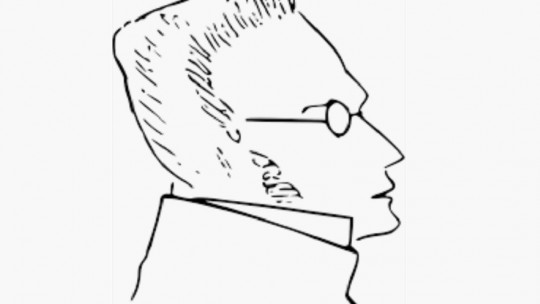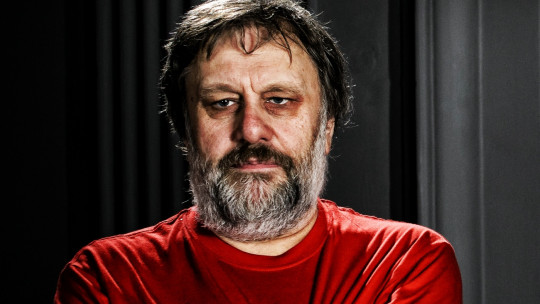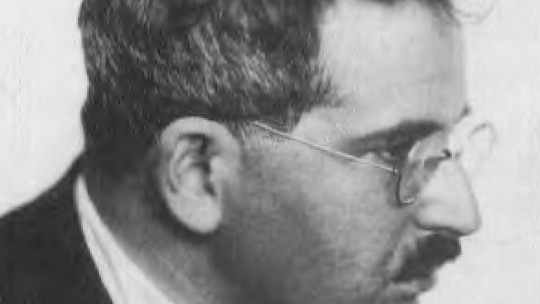Max Stirner was an influential but, at the same time, unknown, or at least anonymous, German philosopher He did not claim to be part of a clear philosophical current nor did he found an ideology during his lifetime, although his formation was influenced by the Hegelian left.
He rejected any integration of the individual into political and social life, since he thought that entities such as the State, society and classes were mere abstractions empty of content.
Despite the curious nature of this, Stirner is seen as one of the precursors of ideologies as disparate as nihilism, existentialism, individualist anarchism, psychoanalytic theory, the extreme right and proto-fascism. Let’s take a deeper look at his life through a biography of Max Stirner in summary format.
Summary Biography of Max Stirner
The life of Max Stirner, pseudonym of Johann Kaspar Schmidt, is that of someone who had his moment of glory and, immediately afterwards, fell into oblivion for practically a century.
Early years
Johann Kaspar Schmidt was born in the German city of Bayreuth Bavaria on October 25, 1806, then the Confederation of the Rhine. He was the only son of Albert Christian Heinrich Schmidt, a lower-middle-class artisan who made flutes, and Sophia Eleonora Reinlein, both Lutherans.
When little Johann Kaspar was six months old, his father died of tuberculosis , with which in 1809 her mother would remarry, this time to Heinrich Ballerstedt. Sophia would temporarily leave her son in the care of relatives in Bayreuth, while she went to Kulm, west of Prussia.
Most of the childhood of who would be Max Stirner is linked to the city of Bayreuth. Later, between 1810 and 1819 he would live with his mother in Kulm, a city that he would visit again in 1830.
The sociopolitical context is important in the life of Max Stirner. At the time of birth, the politics of central Europe presented brief stability Sixteen German princes, including that of Bavaria, signed the Rheinbund act forming the Confederation of the Rhine, ending their ties with the Holy Roman Empire and allying themselves with France.
With the new European order, important changes occurred in the region between 1814 and 1815. The Confederation of the Rhine was not a state particularly supportive of free thought, since the press and advertising were subject to strong censorship, the universities were controlled and the dissident political activity was impossible to carry out.
Adolescence
In 1819, at just 12 years old, Johann Kaspar Schmidt returned to his hometown returning to live with relatives and continuing his schooling at the local school, which had been interrupted when he had gone to Kulm to live with his mother.
Little is known about this stage, but some of the names of his German tutors are known, such as Kieffer, Kloeter and Gabler.
Youth
Once he finished high school, Johann Kaspar Schmidt He began studying philology, philosophy and theology at the University of Berlin There he would have the opportunity to meet great thinkers of the time, such as Georg Wilhelm Friedrich Hegel, Friedrich Schleiermacher and Philip Marheineke in 1826 when he was 20 years old. He would then continue his studies in the cities of Erlangen and Königsberg in 1829.
That same year she decided to interrupt her studies to travel around Germany and temporarily return to Kulm to deal with her mother’s mental health problems. Two years later he would return with her to Berlin, finishing his university studies in 1834 at the age of 28.
It is between the years 1834 and 1835 takes the exams to access professional teaching and, later, he would work in unpaid internships as teaching staff at the “Königliche Realschule” in Berlin. To access the position he wrote a short thesis, Ueber Schulgesetze (School rules).
At the beginning of 1837 he admitted his mother to Die Charité Hospital in Berlin, that same year being the year in which his stepfather died and he married Agnes Klara Kunigunde Butz. Agnes Klara was the illegitimate daughter of the owner of the rental home where Stirner was residing at the time. The marriage would barely last a year, as the woman would die the following year, in childbirth with their unborn child.
In 1839 Johann Kasper Schmidt began working at a girls’ school for young ladies from wealthy families. This work combines simultaneously frequenting places of great bohemian and intellectual activity, such as “Café Stehely” and “Hippel’s Weinstube” That same year his mother would die, suffering from advanced mental disorders.
Maturity
Visits to bohemian places in Berlin lead Johann Kaspar to meet a group of Hegelians known as “Die Freien” (The Free). In these philosophical and political gatherings he would establish a productive relationship with Friedrich Engels and Bruno Bauer
In 1841 he began to write short opinions for the publication of “Die Eisenbahn” (The Railway), entering the publishing world of the prolific German city and it was from then on that he began to sign with the pseudonym Max Stirner. This pseudonym is a play on words referring to the fact that he had a large forehead (Stirn in German).
Thus, in these years Johann Kaspar Schmidt He dedicated himself to educating young bourgeois girls during the day and, when night fell, he became Max Stirner meeting with the circle of young Hegelians, and being critical against the monarchy and, especially, against the law and the existence of the State.
In 1842 the “Rheinische Zeitung” (The Rhenish Gazette) appeared in the city of Cologne made up of Max Stirner himself as well as Heinrich Bürgers, Moses Hess, Karl Marx, Bruno Bauer and Friedrich Köppen.
However, shortly after, the circle would split in two, with the group of Marx, Rouge and Hess, who distanced themselves from Hegel, and the group formed by Bauer and the League of the Free: Mayen, Buhl, Köppen, Nauwerk and Stirner. This last group thought of the revolution of consciences through a criticism of an atheistic, negative and ruleless nature
Minute of fame and philosophical developments
Max Stirner would marry again, this time to Marie Dähnhardt in 1842 At that time he began to write small articles and essays for various periodicals, in addition to the previous ones in which he already worked.
His texts appear in “Leipziger Allgemeine Zeitung” and “Berliner Monatsschrift”. Among his texts you can find “Das unwahre Prinzip unserer Erziehung, oder Humanismus und Realismus” (The false principle of our education, or Humanism and Realism) and “Kunst und Religion” (Art and religion)
At the end of 1844, already being 38 years old, he resigned from his job as a tutor at the Berlin girls’ school, and publishes his most important and, ironically, the most misunderstood work: The Einzige und sein Eigentum (The Only One and His Property). It is a kind of diary full of rigorous logic and a clear style, in which a summary of the Hegelian left during the years 1843 and 1844 is developed.
He rejects all social and political integration of the individual, since he considered entities such as the State, society and classes as mere abstractions completely lacking real content. It is in his most important work where Stirner defends the radical egoism of the empirical and finite self, detached from any moral code and seeing it as the true relatability of the individual.
The work was controversial and not well received by the authorities of the German Confederation , censoring the book and kidnapping it from bookstores, which would generate even more popular interest. Shortly after, censorship was removed and its sale was allowed, making Max Stirner gain popularity, although this fame would not last long.
Final years and decline
Max Stirner writes several essays in response to the criticisms presented by different authors to his book The Only One and His Property. After separating from Marie Dähnhardt in 1846 he decides to continue answering his objections. In Die Philosophischen Reaktionaere (The Philosophically Reactionary) replies to Kuno Fischer and in the fifth volume of Epigonen criticizes Wigand.
In 1847 translates some economics works into German, such as Traité d’Economie Politique by the Frenchman Jean-Baptiste Say and The Wealth of Nations by the British Adam Smith This would allow him to extend his minute of fame a little more, even though he was already beginning to have financial problems and could only survive thanks to these translations.
He would not participate in the German Revolution of 1848 but, years later, in 1852 he would publish the first part of “Geschichte der Reaktion” (History of the reaction), a work in which he captured the events experienced during those turbulent times.
His last years were those of complete failure. He tried to start a business but it went bankrupt and ended up living in poverty Between 1853 and 1854 he spent short periods in prison due to financial debts. Max Stirner, born Johann Kaspar Schmidt, would die on June 26, 1856. In the Civil Registry, regarding his death, a simple “neither mother, nor wife, nor children” would be recorded.
Philosophy
Although Stirner’s main work, The Only One and His Property , appears for the first time in Leipzig in 1844, the origins of his philosophy go back to the articles he had previously published. Among the most notable we have The false beginning of our educationeither Humanism and Realism (1842), Art and religion (1842) and Some provisional comments on the State based on love (1843). It is in them that he begins to outline a certain psychological hedonism and individualistic utilitarianism, based on selfish morality.
For Stirner, the center of all reflection and reality is man He speaks of man not as a representative of abstract Humanity, but of the individual, of the unique “I”. The “One” is so not because he is related to anything, but rather because he and he alone is the foundation of every possible relationship. Everything we have in common with other people is only with respect to the absolute character of our individual uniqueness.
For Stirner, uniqueness is not the absence of relationship, but relationship is, in essence, the absence of uniqueness. The starting point of this work is to deny the existence of God For Stirner, God is a fictitious entity, created by humans.
At the time when religion emerged and was shaping the idea of deities as we understand them today, man renounces his freedom to submit to the domination, ironically, of his own creation. It does not matter whether God is replaced by the State or the family, because the problem is essentially the same. Man is only free when he breaks with religion and politics.









